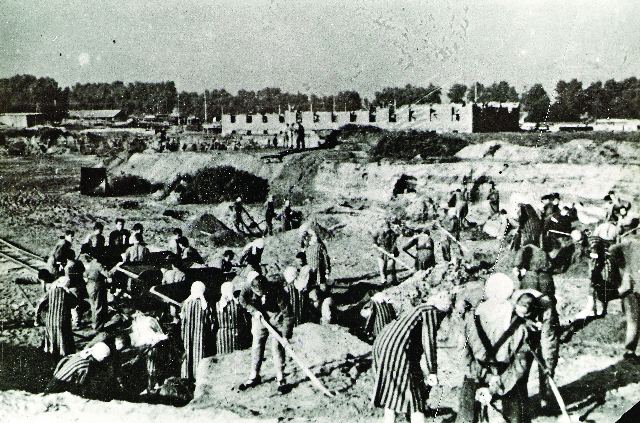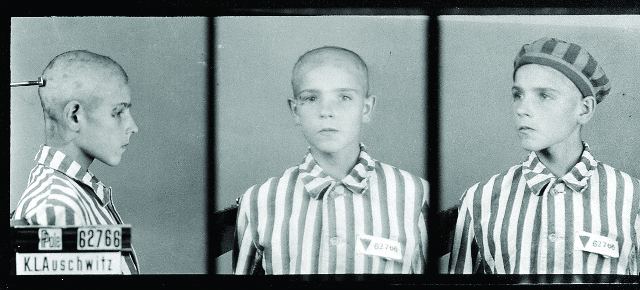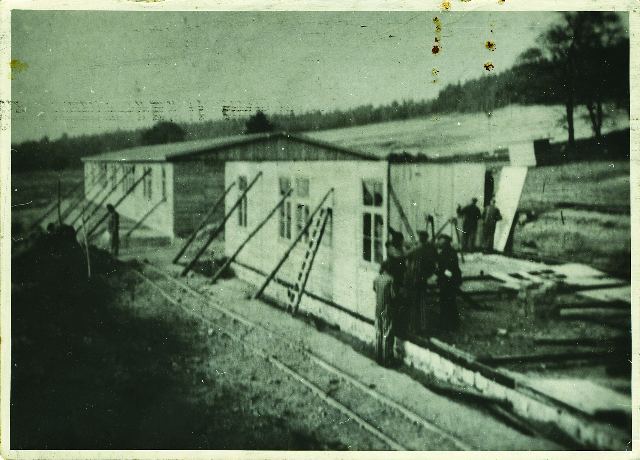The first concentration camp to be set up was Dachau in March 1933 and all future camps followed this model. Dachau was created on the basis of an order of Heinrich Himmler of 21 March 1933. It was designed to isolate political opponents, the clergy and Jews. It was also used to train the SS for other Nazi concentration camps. In the first five years of Nazi rule, a system was designed that would organise the camps, recruit the SS and a model set up for punishing and rewarding the inmates. The camps were controlled by the Head Office for Reich Security, the Economics Department and the Camps Inspectorate. Imprisonment was always a decision of Schutzhaft (protected arrest) designed in theory to protect the arrested from the malice of the general population. Such arrest warrants were issued by the Reich Security Office.
From 1936 – 1939, the following camps were set up: Sachsenhausen‐Oranienburg (1936), Buchenwald (1937), Mauthausen (1938), Flossenbürg (1938) and Ravensbrück (1939). The latter was designed as a concentration camp for women. There were around 165,000 – 170,000 people held in concentration camps when the war started.
At the beginning, Poles were taken to concentration camps in Germany. In 1939 a group of priests, monks and intelligentsia arrived in Dachau.
Expansion of the concentration camps occurred after the Nazi invasion of Poland. The camps which had been a place where the political opposition could be isolated became an instrument of terror, slave labour and mass murder of people from the occupied countries.
As early as 2 September 1939 the Germans opened a camp at Stutthof (now Sztutowo) on territory which had been part of the Free City of Danzig until the previous day.
The first camp in Poland was set up at the beginning of June 1940 at Oświęcim (Auschwitz). The Germans needed a place to hold those who had been arrested in both the annexed territories and the General Government and Konzentrationslager Auschwitz served this purpose. In August 1941, the second camp was opened in Poland : KL Lublin ‐ Majdanek. New camps were also opened in Germany. The largest were Neuengamme (June 1940), Natzweiler‐Struthof, (July 1940), Gross‐Rosen (August 1940), Bergen‐Belsen (October 1940) and Mittelbau‐Dora (towards the end of 1943). The location of the camp depended on railway lines and proximity to industrial facilities or quarries. From 1942 prisoners were used as a source of free labour and the growth of the camps was exponential in Nazi occupied Europe.

Transport to the camp and then ‘welcoming’ in it were set out to give the prisoner a taste of what was to come. New arrivals were beaten, pushed around, sworn at and barked at by dogs. Prisoners were gathered in the roll call square and kept there for hours on end before being subjected to humiliating washing procedures. They were stripped, hair shaved off and then given striped camp uniforms.

When there were no uniforms available, they were given used military or civilian clothes with a clearly visible sign either painted or sewn on showing where they were from. Footwear was taken away and in its place heavy, wooden clogs were given. Later rags with wooden soles served this purpose. All personal property was confiscated. Prisoners got camp numbers and henceforth that was their name. The number was written on a piece of material alongside a coloured triangle which showed their ‘offence’. Red for political prisoners, lilac for Jehovah’s Witnesses, black for what the Nazis considered asocial which could be those attempting to avoid work, green for criminals, pink for homosexuals and blue for Spanish Republicans. Each prisoner had the first letter of her or his nationality (e.g. P for Poland). Jews had either a yellow star or a two colour star.
In most camps the prisoners lived in wooden barracks which were always overpopulated. At the beginning prisoners slept on straw, then paper mattresses and then two or three level bunks, usually with two people in each. They were given one thin blanket to cover themselves with. The barracks used had an iron heater, table, some stools and a bucket.

The awful sanitary conditions, lack of running water and underwear, led to a plague of insects which in turn led to all manner of diseases. Prisoners were fed poor quality food in small quantities which led to deaths from starvation. A person on heavy manual labour could receive 1,000 calories which is well below requirements. Prisoners were punished for the smallest infraction. Humiliation, beatings, hunger, fear and the constant threat that one could be killed alongside physically very difficult labour were the lot of prisoners. The threat of death was constant and came in various forms such as torture, shooting, drowning and the weak and ill were gassed or injected with poison. Sometimes they were just left to die of hunger or cold. When the Gestapo or camp authorities wanted to kill people quickly, they sent them to the penal company.

The Nazi authorities did not worry about the health of the inmates as there were always plenty of healthy people to take over the work done by the sick. Prisoners involved in heavy work in industries did not receive any payments whatsoever. From 1941 the Nazis started to build gas chambers for the mass murder of prisoners.
Until 1942 the main function of the camps was to eliminate the political and racial enemies of the Third Reich. Prisoners were forced to do extreme physical labour often for no reason at all. This changed when the situation at the front deteriorated. From then on the Nazis needed to exploit slave labour for reasons of production and as a result sub camps appeared next to industrial and other facilities. Many prisoners worked in armament factories, construction or cleaning. Many were killed in bombing raids. Prisoners also died en masse in the death marches when the Germans attempted to evacuate factories which were situated close to the front.
Inhumane medical experiments were carried out at Auschwitz, Buchenwald, Dachau, Mauthausen, Natzweiler‐Struthof, Neuengamme, Ravensbrück and Sachsenhausen in the name of medical science. The victims were not volunteers and were often children. Many died in terrible pain during these experiments.
Concentration camps, especially Auschwitz‐Birkenau, from 1942 were an integral system of the mass murder of the Jews.
Relations